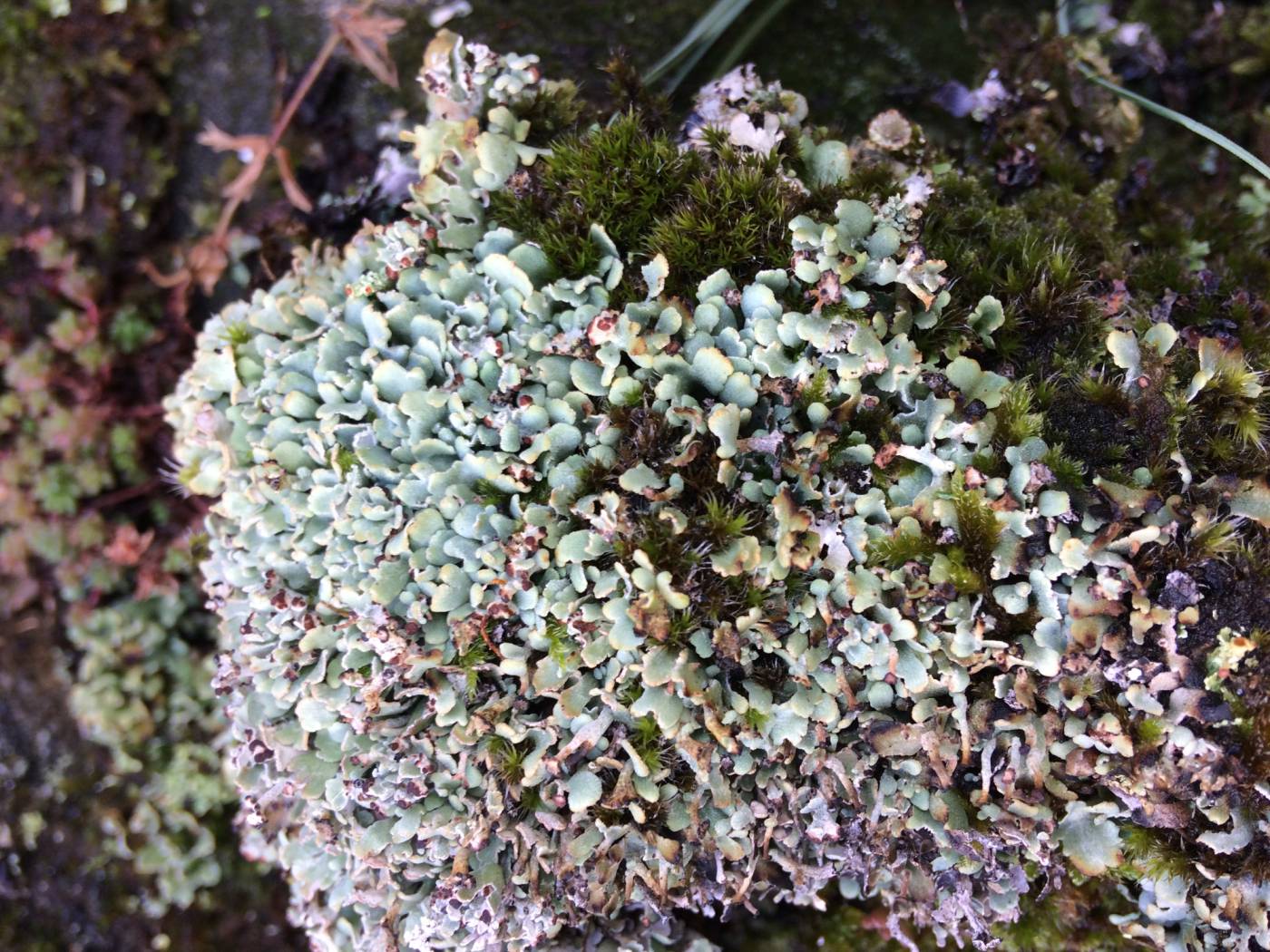An oceanic lichen with large, elongated and often erect squamules with bluish or grey tinge. Their underside is white with black basal part. It is, thus, similar to the chemically identical C. macrophyllodes (contains atranorin and fumarprotocetraric acid) which is a high mountain species associated with snow patches, not known from the Czech Republic (Ahti & Stenroos 2013). C macrophyllodes also differs in proliferating podetia, which are rare, inconspicuous and irregular in C. subcervicornis.
Cladonia subcervicornis is a characteristic species, often even the dominant Cladonia species in coastal areas of Europe. It usually grows on humus and bryophytes on rock outcrops. It may occur in the very proximity of the seashore. The lichen is rare inland and its finding in central Europe, specifically in the Českosaské Švýcarsko region (Palice et al. 2007), was quite surprising. It is rare there, found on more or less exposed rocks at places with the natural occurrence of Pinus sylvestris. It most commonly grows directly on the sandy substrate there, sometimes also on a thin layer of humus.
Literature: Palice Z., Slavíková-Bayerová Š., Peksa O., Svoboda D. & Kučerová L. (2007): The lichen flora of the Bohemian Switzerland National Park (Czech Republic). – In: Härtel H., Cílek V., Herben T., Jackson A. & Williams R. B. [eds], Sandstone Landscapes, p. 200–204, Academia, Praha. Ahti T. & Stenroos S. (2013): Cladoniaceae. – In: Ahti T., Stenroos S. & Moberg R. [eds], Nordic Lichen Flora 5: 87–89. Burgaz A. R., Ahti T. & Pino-Bodas R. (2020): Mediterranean Cladoniaceae. – Sociedad Española de Liquenología (SEL), Madrid.
taxonomic classification:Ascomycota → Lecanoromycetes → Lecanorales → Cladoniaceae → Cladonia
Red List (Liška & Palice 2010):CR – critically endangered
Red List (Malíček 2023):C1 – critically endangered
Occurrence in the Czech Republic
All records: 15, confirmed 2. One click on a selected square displays particular record(s), including their source(s).

